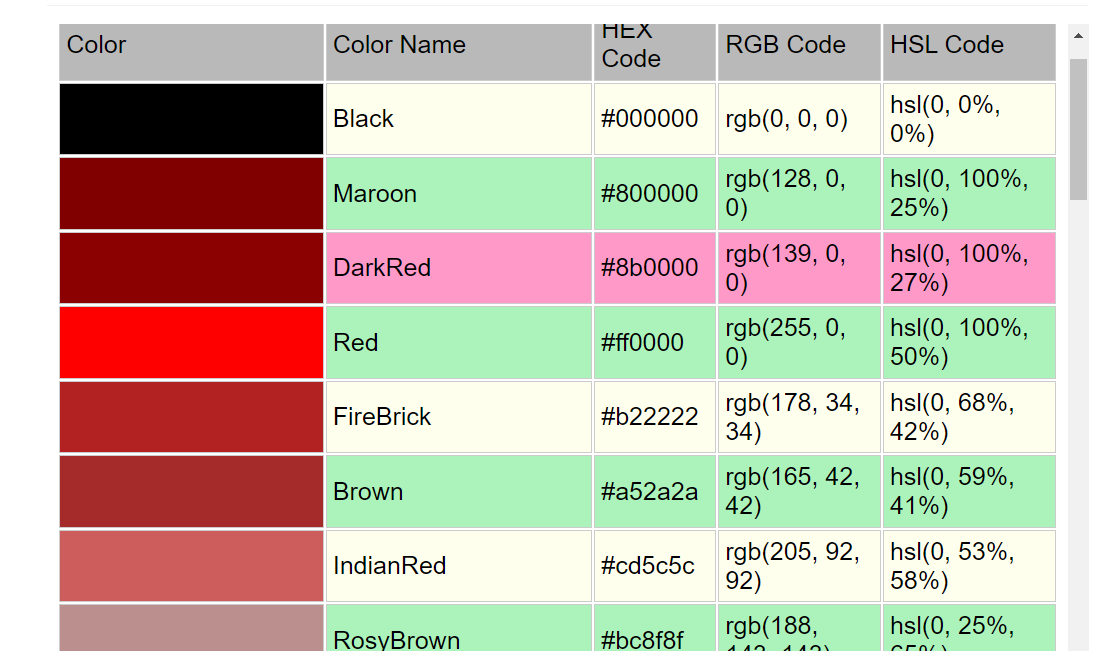The Colorful World of HTML Color Names: A Guide for Designers and Developers
Introduction
The color performs a key role in almost every web page, and it can elevate an unattractive page to the level of a work of art. If you are developing a personal blog or a business website, for an instance, the colors offer a wide breadth: emotion, usability, or aesthetic appeal. In the process of building a personal webpage, one can opt for color names as a better alternative- these are self-explanatory n descriptors that stand for various’ colors in the range. The latter in the title of this article will assist the reader in deciphering HTML color names- evaluative tools, determining medium efficiency of their use and providing the user with a few guidelines to enable them polish their color selection technique.
Understanding HTML Color Names
The browser supports text documents whose characters have been organized to include color names. The color name is a name representation that describes a concrete color. This tool is particularly useful to web specialists because now they can simply use the color instead of having to store color hexadecimal codes or number values.
The Beginning Stages of Color Names
As you open the custom color window, and click the identifying contests contact to construct a color:
- Interesting Colors: such as red, blue, and green.
- An example of a shade is: lightblue or darkgreen.
- There are a plethora of shades ranging from light to dark, giving developers and designers an advantage in creating aesthetically pleasing products.
Where and Why Would One Choose to Use HTML Color Names?
HTML color names are availed with power reasons which are as follows:
- Adroitness: Easily recognized or called out rather than memorizing hex values.
- Readability: Enhances readability for other web developers and web designers.
- Founder: Guarantee consistency in the use of the pages with the defined names.
Let us now examine what HTML color names are and when making use of them, what gives it its name.
Basic Colors
Basic colors: the building bricks of any web pages are as follows.
- Red: describing a strong color which is linked or associated to strong feelings or urgency.
- Blue: which is often associated with loyalty and serenity and calming feelings.
- Green: for peace and workout for nature and eco-friendly purposes.
“Um…..it isn’t a walk in the park – picking the right color can help in getting the desired effect that will get them to pick it”
Extended Color Set
Extended colors make for a much wider canvas. Think of the less popular colors available like:
- PapayaWhip: A gentle warm peach color.
- SlateBlue: a purple that is more on the gray toned side but still a mid level.
There is elegance in the product given by more colors so be sure to use them as appropriate, for instance in the background or text to accentuate certain items.
HTML Color Names When Working on Your Projects
Integrating the imputed name instead of color values into HTML is easy. There are many techniques that one can employ:
<p style="color: coral;">This text is color corral!</p>
Internal CSS
You can also declare styles within a <style> element which placed in the <head> section of the html document.
<style>
p {
text-align: justify;
}
</style>
External CSS
It is recomendable to use an external style sheet file for bigger projects:
p {
font-size: 28px;
}
This separation allows you to take care of the maintenance of your code and also makes the color management across several webpages easy.
Methods of Effective Color Selection
The choice of the correct colors can be quite challenging but the following tips can ease the process of selection:
Color Theory
- Complementary Colors: Complementary colors (Such as Blue and Orange) which are in opposite sides on the color wheel can create some sensational images.
- Analogous Colors: Colors that are situated near each other on the wheel, such as blue, teal and green are positioned likely which gives a good designs to users.
Use of Tools and Other Means
There are various means available to help designers see colors:
- Adobe Color Wheel: palettes can be generated based on the principles of color theory.
- Coolors.co: Color schemes can created quickly and combinations can be tried out.
Confirm Combinations
Don’t forget to always check how your chosen colors appear on different devices and screens. There is an accessibility standards for color combinations which helps to test if they are appropriate like WebAIM Color Contrast Checker.
Conclusion
A color name in html is a basic tool for web designer or developer who needs a simple approach to the design of sites.
In order improve design projects one should understand which types of colors are available to them, their application and methods of selection. One can definitely enhance their design projects by understanding the basic principles of selecting colors in the world of HTML color names. Next time when you have to put colors on the website, keep in mind to utilize HTML color names, because when you use more fitting colors, your imagination can truly take off!
Takeaway: Use HTML color names and other color variations to help improve user experience without over complicating things. And if you want further knowledge about colors in design, you can refer to Smashing Magazine’s Color Theory Tutorial!
Please share your ideas or experiences with HTML color names in the comments section! Even your experience regarding colors can motivate a lot of other designers!

